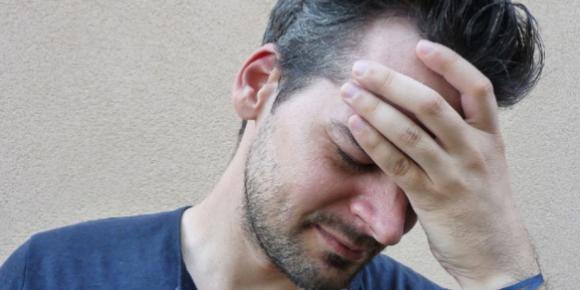
When we have a severe headache we often think we have a migraine; however, there is another culprit to look out for: your temporomandibular joint (TMJ). Your TMJ is the hinge where your jaw connects to your skull, and it allows us to chew, talk, yawn, etc. When this joint and its muscles are irritated from chronic clenching or trauma, it can produce a pain in the head and neck that can easily be mistaken for a migraine headache.
Migraines are generally headaches that happen repeatedly and often there is a family history. Approximately 15% of the world’s population, including children, suffer from migraines (source: Migraine Trust). It should be noted that there are two main categories of migraines: common and classic. For the purposes of this post we are focusing solely on the common migraine (see the resources linked below this post for more information on the differences between the two types).
Which One of These Headaches Do I Have?
Though these two types of headaches do have overlapping symptoms and can often be confused for one another, they have key distinctions that—when noted—will determine how well they can be resolved and/or managed:
TMJ Headache (has at least two of the following) | Common Migraine (has at least two of the following) |
|
• tension headache, with a band-like pressing/ • bilateral (dual sided location) • mild to moderate in intensity • not aggravated by physical activity |
• pulsating pain (thought to be caused by dilation • unilateral (one-sided location) • moderate to severe in intensity • physical activity aggravates the condition |
It’s also helpful to note that the two types of headaches have different triggers that worsen the symptoms. For instance, TMJ headaches are worsened by prolonged or forceful chewing (examples of difficult foods for the jaw are steak, apples, a large sandwich, etc.), stress, and poor posture (often while sitting and doing computer work or writing). In addition to being worsened by physical activity, bright lights, noises, and even some odors can worsen a migraine.
How Chiropractic Techniques Can Help
Whether you’ve identified your headache culprit or would like Dr. Dade’s professional opinion, the benefits of chiropractic treatment begin with a comprehensive examination. Tension and congestion in muscle tissue create dysfunctions that can contribute to irritation in the nervous system, which can trigger both TMJ and migraine headaches. Combining chiropractic treatment with Active Release Techniques (ART) helps provide relief, while also restoring optimal motion to the affected joints.
Chiropractic manipulation of the jaw, neck, and upper back are used to treat tension-type TMJ headaches, along with myofascial muscle work. Depending on the patient one, or sometimes both, techniques are used. While rest and/or migraine medications are typically the best treatment approach for acute stage migraines, ART and chiropractic manipulation of the neck and upper back can be effective for chronic migraine sufferers.
Self-care is essential to the long term resolution and stabilization of any condition, but particularly headaches. Keeping a log to record a history will help determine the timing, quality, and severity of the headaches, giving us the information we need to treat it. Additionally, Dr. Dade utilizes the DREAM (Diet, Rest, Exercise, Alignment, and Mindfulness) protocol, recommending lifestyle modifications to treat a patient's condition beyond the office visit.
Dr. Dade looks forward to partnering with you on your wellness journey.
____________________________________________________________________________
References and for more information:
-
Image by Istvan Brecz-Gruber from Pixabay
